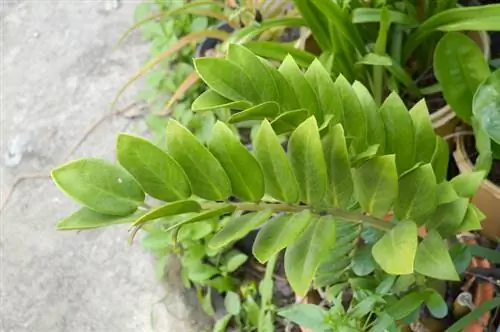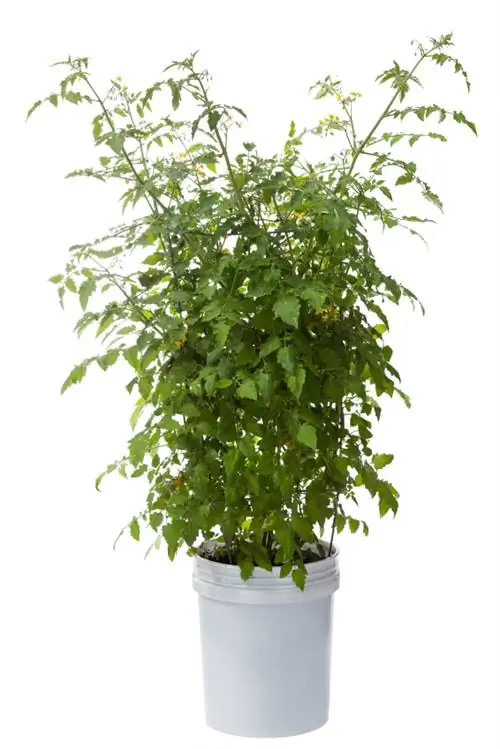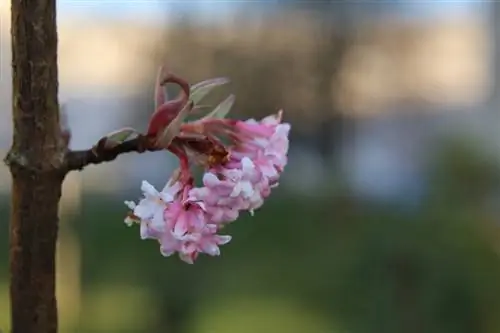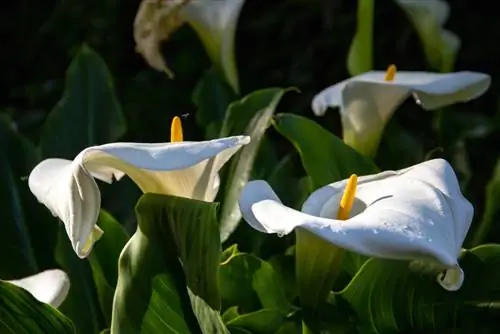- Author admin [email protected].
- Public 2023-12-16 16:46.
- Last modified 2025-06-01 06:02.
In East Africa and especially in Kenya, the lucky feather, botanically Zamioculcas zamiifolia, is a widespread plant. Zamioculcas, which is considered very easy to care for, is a popular houseplant in this country as it needs little water and rarely needs to be fertilized or repotted. Nevertheless, problems can arise, especially as a result of incorrect care: For example, if you water the plant too often, the stems often rot.

What to do if Zamioculcas stems rot?
Zamioculcas stems rot if they are watered too frequently and waterlogging occurs. To save such a plant, you should remove it from the pot, remove any rotting material and place it in a new pot with fresh substrate. Avoid watering in the first few weeks.
Stem rot - frequent watering is the cause
The Zamioculcas has adapted perfectly to the hot and dry climate in eastern Africa; it can survive for weeks without water. The plant stores the valuable water in its fleshy petioles, which are thickened at the bottom, and in the pinnately arranged leaves. For this reason, the Zamioculcas should not be watered too frequently - it is better to hold off on watering. Too much moisture causes the roots to rot due to waterlogging and this rot eventually spreads to the stems - but when these become brown and mushy or break off, the disease is usually very advanced. Therefore, keep an eye out for the first signs: For example, in many cases the leaves initially turn yellow.
Saving Zamioculcas with rotting stems
With a little luck you can still save your rotting Zamioculcas. To do this, you must immediately unpot the plant and remove all adhering substrate as well as all rotting and yellow plant parts. If necessary, if most of the plant is already infected, simply divide off the remaining he althy remainder and repot it. In any case, the lucky feather must be trimmed more or less extensively. The plant is then placed in a new pot - very important so that any fungal spores are not transferred to the new planter - and receives fresh substrate. Don't water it for the first few weeks, it has stored enough water in the remaining leaf organs.
Tip
After repotting and as a preventative measure, it is best to proceed as follows when watering the Zamioculcas: Only water the plant when you can stick your index finger at least two centimeters into the substrate and it is still dry there. Merely superficial dryness is not enough - there can still be sufficient moisture in the depths of the pot. You can play it safe with hydroponics, where you always keep track of the water supply.






